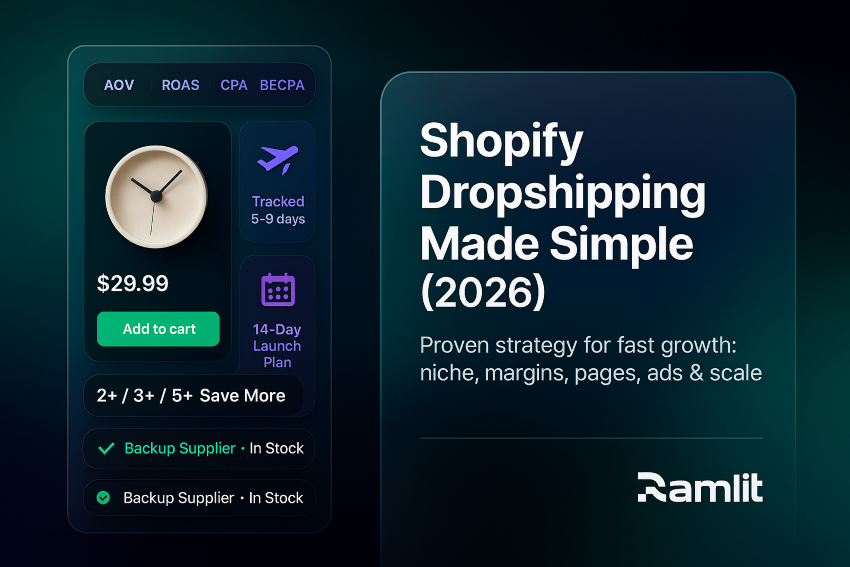Introduction
Imagine waking up every morning to see new orders, fresh leads, and returning customers — all while you were sleeping.
Sounds like a dream? It’s not.
With the right Shopify store design, automation, and strategy, you can actually create an online store that sells itself — converting visitors into buyers without constant manual effort.
But here’s the truth: Most Shopify stores fail, not because their products are bad, but because their store isn’t built to sell.
In this guide, you’ll learn exactly how to build a Shopify store that converts on autopilot — blending smart design, automation tools, and sales psychology that drives revenue 24/7.
By the end, you’ll know: ✅ What separates high-performing Shopify stores from average ones ✅ How to automate marketing, fulfillment, and customer care ✅ How to design a store that builds trust instantly ✅ The tools and strategies top Shopify brands use in 2025
Let’s dive in.
Why Your Shopify Store Needs to Sell Itself
E-commerce competition is tougher than ever. With thousands of stores launching daily, only those that master automation and experience design truly thrive.
A store that sells itself isn’t “magic.” It’s built strategically to:
- Attract qualified traffic
- Convert visitors into customers
- Retain buyers automatically
Think of it like this: instead of chasing every customer manually, your store does the selling for you — through automation, design psychology, and data-driven optimization.
What Makes a Shopify Store “Sell Itself”?
In 2025, shoppers expect speed, trust, and personalization. Here are the core elements that define a self-selling Shopify store:
1. High-Impact Design that Builds Trust
Your store’s design is your first salesperson.
A cluttered, confusing layout makes customers bounce instantly. But a clean, conversion-focused design builds subconscious trust within seconds.
Key elements:
- Minimal design with bold visuals
- Clear value propositions and benefits above the fold
- Consistent color palette that matches your brand tone
- Testimonials, reviews, and trust badges
- Prominent “Add to Cart” buttons
💡 Tip: Use heatmaps (Hotjar, Lucky Orange) to see where users click and what they ignore.
2. Speed & Mobile Optimization
A slow store kills conversions — it’s that simple.
Over 70% of Shopify traffic comes from mobile, and if your site takes more than 3 seconds to load, half your visitors leave.
Optimize by:
- Using lightweight themes (like Dawn or Booster)
- Compressing images (TinyPNG, ShortPixel)
- Caching with tools like Cloudflare
- Reducing unnecessary apps or scripts
Every second you save adds dollars to your bottom line.
3. Smart Automation = Hands-Free Growth
Automation is where your Shopify store starts “selling itself.”
Here’s how:
Marketing Automation:
- Use Klaviyo or Omnisend to send personalized emails & cart reminders.
- Set up automated welcome flows, upsells, and thank-you sequences.
Fulfillment Automation:
- Connect to print-on-demand or dropshipping apps like DSers or Printful.
- Automate order updates via Zapier or Shopify Flow.
Customer Service Automation:
- Add AI chatbots (like Tidio or Re:amaze) for 24/7 support.
- Use canned responses for FAQs to reduce manual work.
Your goal? Let tech handle repetitive tasks so you can focus on growth.
4. Persuasive Copywriting that Converts
Even the most beautiful store fails without the right words.
Your copy should answer three questions instantly:
- What’s in it for me?
- Why should I trust you?
- Why now?
Conversion-driven copy tips:
- Use “you” more than “we.”
- Focus on benefits, not just features.
- Create urgency (limited-time offers, low stock alerts).
- Add social proof: real customer photos, star ratings, and video reviews.
5. Seamless Checkout Experience
The average cart abandonment rate is 69%, mostly due to poor checkout flow.
Fix it by:
- Offering one-page checkout
- Including express payments (Shop Pay, Apple Pay, PayPal)
- Allowing guest checkout
- Displaying total cost early — no hidden fees
The easier it is to buy, the higher your conversion rate.
How to Build a Shopify Store That Actually Converts
Let’s put it all together step by step.
Step 1: Choose a Conversion-Optimized Theme
Start with a theme designed to sell — not just look good.
Recommended themes:
- Booster Theme (built for conversions)
- Debutify (modern, fast, and flexible)
- Impulse (great for branded storytelling)
Step 2: Create a Brand Identity
Your Shopify store should feel like a living brand, not a generic dropshipper page.
Focus on:
- Professional logo & color palette
- Consistent tone of voice
- About page with real story & photos
- Brand mission or sustainability statement
Trust drives sales — and authenticity drives trust.
Step 3: Add Products That Tell a Story
Don’t just upload photos — sell experiences.
For each product:
- Use 4–6 professional lifestyle photos
- Write compelling descriptions focusing on benefits
- Add videos or GIFs showing real usage
- Include “why customers love it” or “featured in” badges
Step 4: Automate Email & Retargeting Campaigns
Turn one-time visitors into repeat customers.
Set up:
- Welcome email flow
- Cart recovery flow
- Post-purchase review & upsell emails
- Win-back campaigns for inactive customers
Also use Facebook Pixel + Google Ads retargeting to bring visitors back.
Step 5: Leverage Social Proof Everywhere
Social validation is your strongest conversion weapon.
Add:
- Live sales notifications (Fomo, Proof)
- Real reviews with customer photos (Loox, Judge.me)
- Influencer mentions or media logos
People trust people — not ads.
Step 6: Use Analytics to Continuously Improve
Your store should evolve as data comes in.
Track via:
- Google Analytics 4
- Shopify Analytics Dashboard
- Hotjar Heatmaps
- Meta Pixel Events
Make decisions based on data, not guesses.
Future-Proof Your Shopify Store: 2025 Trends**
The ecommerce world is evolving fast. Stay ahead with these 2025 trends:
- AI-driven personalization – Tailored product recommendations and pricing.
- Voice shopping optimization – Customers ordering via Alexa & Google Assistant.
- Sustainability branding – Eco-conscious packaging & storytelling.
- AR product previews – Virtual try-before-you-buy experiences.
- Automation-first operations – From marketing to fulfillment.
Early adopters will dominate.
Quick Takeaways
✅ A store that “sells itself” = smart design + automation + psychology ✅ Focus on speed, trust, and personalization ✅ Automate everything repetitive — from emails to fulfillment ✅ Copy, visuals, and UX should all push toward one goal: conversion ✅ Keep evolving — ecommerce success is about adapting fast
Call to Action (CTA)
🚀 Ready to build a Shopify store that sells for you — not just through you?
Let’s create a modern, automated, and conversion-optimized Shopify brand that earns even while you sleep.
👉 **Contact me today to start building your self-selling Shopify store. hire expart
FAQ Section
Q1: Can I automate my Shopify store completely? Not 100%, but you can automate up to 80% using tools for marketing, order fulfillment, and customer service.
Q2: Which Shopify apps are best for automation? Klaviyo (email), DSers (dropshipping), Tidio (chatbot), and Shopify Flow (workflows).
Q3: How much does it cost to build a high-converting Shopify store? Expect $300–$1000 for design, apps, and branding depending on scale.
Q4: What if I’m not tech-savvy? Shopify is no-code friendly — and you can hire a Shopify expert (like me 😎) to set everything up for you.
Q5: How do I increase repeat customers? Use loyalty programs, post-purchase emails, and personalized offers.




